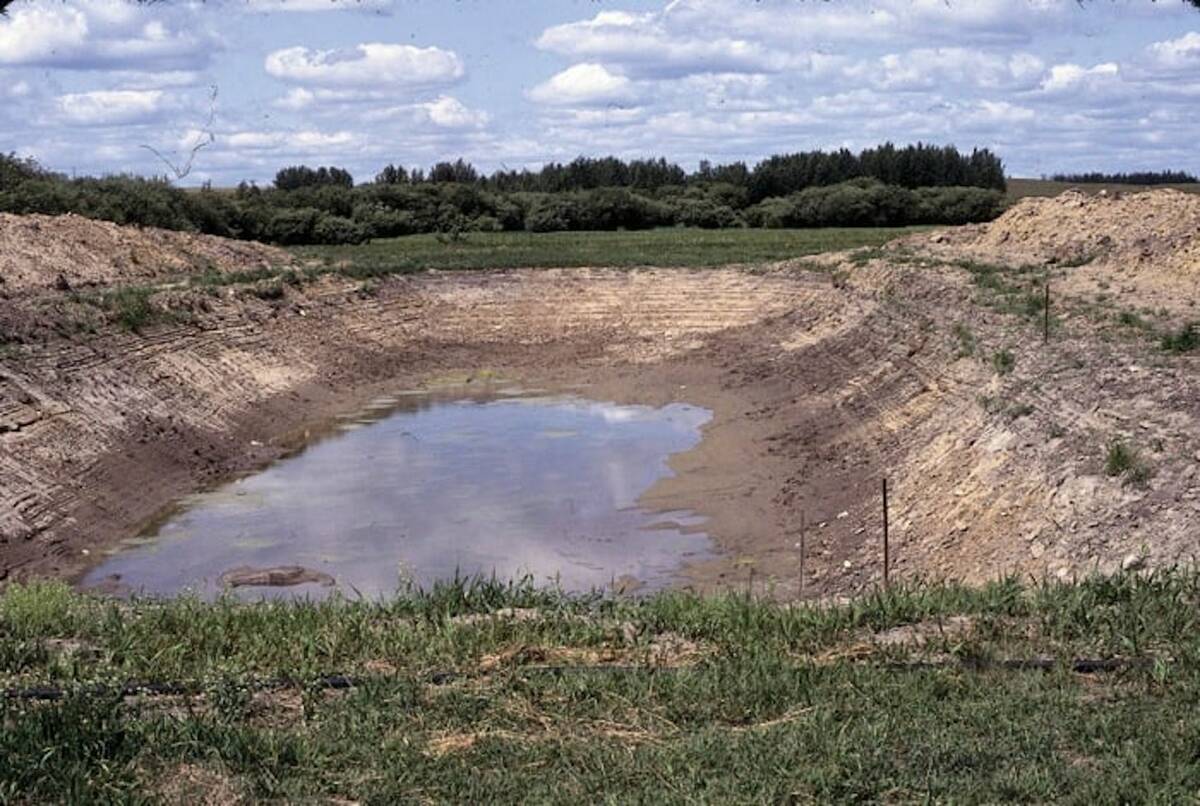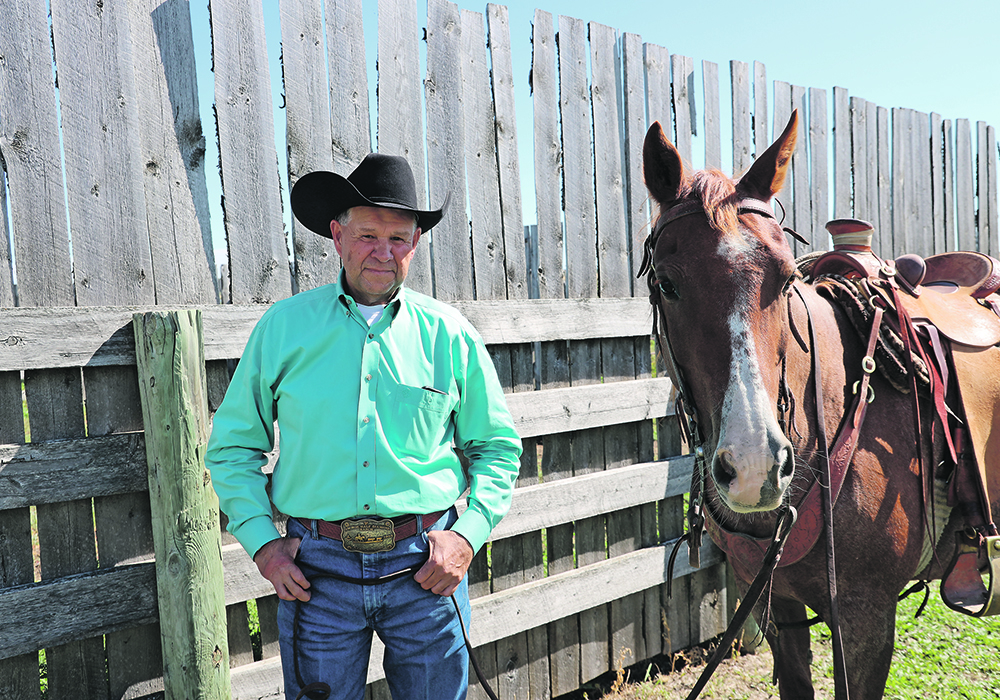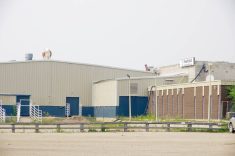Gary Guichon enjoyed his job but says he doesn’t miss middle-of-the-night calls to deal with livestock truck rollovers
STRATHMORE, Alta. — After almost 40 years as a livestock inspector, Gary Guichon counts everything.
Driving past a pasture he counts the cattle in the field. Animals walking down an alley get counted and sometimes he counts birds.
“I count most stuff. Geese take off from the lake and I try to count them,” said Guichon from his Strathmore farm.
His wife Kathy confirms his counting never stops: “We’d be driving down the highway past a field and Gary goes, ‘32 head out there,’ and keeps driving.”
Read Also

Dry summer conditions can lead to poor water quality for livestock
Drought conditions in the Prairies has led to an decrease in water quality, and producers are being advised to closely monitor water quality for their animals.
In the early days working in the Calgary Stockyards, he said, cattle were automatically counted any time they went past a worker.
“They’d train those guys if someone was bringing up a draft of cattle and you happened to be in the alley, it didn’t matter who you were, you’d lean against the fence and when the guy got to you, you’d say, ‘64, yup thanks.’ It was just the way the staff worked.”
Guichon began his career as a brand inspector in 1982 at Calgary Stockyards. It was Guichon’s job to inspect the brands and ensure the identity of the livestock at packing plants, stockyards and country sales in the region.
During the day he would identify brands and at the end of each day manually write each brand and identifier into a special book to ensure the proper identification of the cattle.
“If that guy had 40 different brands we would use a page and a half for one contributor.”
Brands were one way of identifying animals, but Guichon said inspectors looked at everything from purebred tattoos, breed differences and RFID tags to help ensure an animal’s ownership.
“If we held the money on something that had someone else’s brand on it, you were expected to get all the identifiers on it. If there is a brand, get it down, if there is an ear tag, get it down, if there is an RFID tag, get it down and a tattoo may be helpful,” he said.
“I have made mistakes too. I clipped the heck out of a grey cow one day. I didn’t think I left any hair on it. A guy came into the market and said, ‘you better open your eyes because my brand is there.’ I said, ‘no it ain’t,’ and I took my rope and clippers. Sure enough, way down on the belly was a brand.”
Guichon said while they sometimes had difficulty finding all the identifiers, so did some cattle owners. A few times he was called to farms about a stray animal only to find out the animal belonged to the person who called.
“There was a stray white heifer and when I went to their farm I saw they had all Charolais cattle. She looked like a purebred and when I read the tattoo, the farmer said, ‘those are our farm letters.’ ”
At another farm, the owner called about a stray bull in his herd. Guichon noticed it had a Calgary Bull Sale tag. He made some calls and discovered the farmer had bought the bull earlier that year.
“A lot of guys really depend on their brand.”
The job changed in 1998 when brand inspection services were moved from Alberta Agriculture and privatized under Livestock Identification Services. It wasn’t without its controversy, said Guichon.
While some producers may have thought the rules were optional before it was privatized, the new general manager, Ken Weir, strictly enforced the government legislation.
“He did a lot of things that ticked a lot of people off, but in my opinion he did some good. When we were with the government it got way easy. You could get told to back off. When Weir came it got back to hard and fast and every brand inspector was chewed on because we were making people follow the legislation.”
Later, when David Moss took over LIS, Guichon’s title changed to livestock inspector and with it, increased responsibilities.
“He was always wanting to show LIS’s worth and value. He was always looking for things we could do to help the industry.”
Finding value for the livestock industry was a mission that Guichon took seriously when he ended up supervising almost 80 inspection staff across the province.
As head of inspection, it was Guichon’s job to manage staff, but also help solve livestock thefts, promote the industry and deal with difficult livestock rollovers and accidents.
Guichon remembers one call about two stray steers wandering down the ditch. They had been stolen the night before. The thief may have noticed the brand and decided not to risk the chances of getting caught selling branded cattle and let them loose.
Horses are harder to trace, he said. Stolen horses can often end up being used on a farm or ranch for 15 years before they are ever resold.
Guichon often brought his horse along to rope escaped animals or to rollovers along Alberta’s busy Highway 2.
“We got a call. Some liner’s back door came open and he was dropping fat heifers out the door. One had fallen out on the highway and was in the pasture. My horse was sharp shod. I took a run and just got a loop on it and she just stopped. If she had gone through the fence and gone to the highways, it wouldn’t have been good.”
At another call to check out a stray bull, Guichon and his partner tried to rope a bull in a pasture filled with barbed wire. Worried about the wire, Guichon tossed a rope backward at the bull and caught a hind leg. When he wrapped the rope, his hand got sucked down into the horn and all his fingers and the top of his hand were sliced off.
He rode back to the trailer and was driven to the hospital. Later, his roping partner was sent back into the pasture to find his hand and bring it to the hospital in hopes that it could be reattached.
“I never thought about the hand when it came off. I was laying on the bed and looked on the counter and saw a plastic tobacco can where I kept my .22 shells. I thought, oh good he found my hand. He must have found it and brought it to town.”
Two years and many surgeries later, the fingers are reattached, except for the pinkie finger.
“If it wasn’t for all that wire out there, we could have roped him wherever.”
After 38 years, Guichon’s job ended last July and he has turned his attention to his family, cattle and farm outside Strathmore. What he doesn’t miss are the middle of the night calls to deal with livestock rollovers.
“It was also a huge relief. It is nice my phone doesn’t ring at night to deal with a stray in someone’s backyard. I don’t know how many family dinners, Christmas or Easter dinners I would miss to deal with a stray in the city.”

















